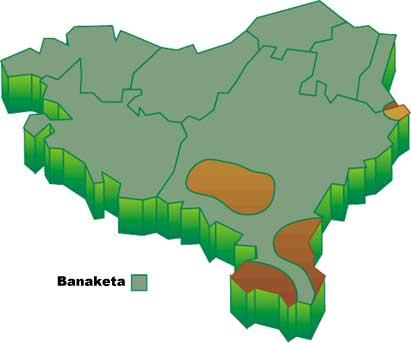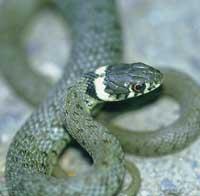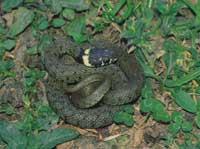Tie snake, great interpreter

I was young when I first saw the play of this animal. That day, while we were fishing, moving to the surface of the water like the waves, we saw a prominent snake in the river, and with the mischief of that age it occurred to us to sharpen with the tip of the cane. However, the serpent climbed, with his mouth open and his tongue hanging. At that time we could also have a similar face, because we didn't understand in any way how the snake could be removed by touching it.

During the currents of water, the deceased snake was dragged by the river, but when it moved away from us a few meters, it recovered and hid at full speed between brambles. Lie! A scam that made us that day! However, this is not the only time I have seen the tie snake in the plays. Years later he offered me a new show. That second, when I found myself on a mountain path, he stood upright and began to smile as he blew his neck. When I made a gesture of rapprochement, I responded by confronting myself with fearful courage. This magnificent work also ended with special effects: the snake emptied my anal gland and greeted me with a jet with a boring smell.
As we have seen, the tie snake ( Natrix natrix) can use strange systems for enemies to leave it in peace: on the one hand, it has the ability to pretend both the dead and the terrifying beast, and on the other hand, it can give off an aspreciable smell. But the bite does not and does not, nor will it run because it has no poison. It is normal, however, to try to escape first. In any case, the size of the snake may be enough to create respect on some enemies.
Thus, although normally smaller, females occasionally exceed meters (up to 120 cm). On the contrary, males hardly have a length exceeding 75 cm. Both sexes have a robust body, well-defined head and round pupils.
On the other hand, the determination of the color of this reptile is not easy, since it can present a great variability both regionally and universally. In general, its color is similar in the upper part of the body: greenish or olive brown, drawn with small dark spots. The bottom is whitish and decorated with black squares like chess boards. But in addition to this typical coloring, you can find black, golden, gray and others. The tie that gives its name in Basque is a whitish or yellow spot that young people have on their neck. But as it gets older, the color is losing to virtually disappear.

However, other characteristics that must be taken into account to differentiate this species from similar ones are: Unlike the eve snake ( Maura Natrix), the necktie has the nostrils looking at the sides and on the lip has 7 scales, 3. and 4. touch the eye. It usually has a single opposite scales and three behind the eyes. The dorsal scales form 19 lines and are usually somewhat flattened. Finally, the number of ventral scales is 157-183.
On the other hand, it is the most widespread reptile in Europe. Its southern boundary extends to North Africa and extends to a latitude of 67 degrees in Northern Europe. To the east reaches Lake Baikal in Asia. However, it only lives in appropriate places in this vast region, and in some islands, such as Ireland, the Balearic Islands, Malta or Crete, nothing appears.
With such a wide distribution, of course, it can cover different habitats. Above all, he loves humid places and swampy meadows, but at the same time adapts perfectly to the earth. Thus, it is frequent in oak groves, fields, bushes and mixed forests. Consequently, we could find it in almost the entire territory of Euskal Herria. It can circulate everywhere in rainy and dry areas in the wettest nooks. As can be seen in the distribution map that we have drawn, the Bardenas and the dry areas between Estella and Tafalla have been excluded for their reduced extension. On the other hand, it does not present a great tendency to mount. On the contrary, in medium and low heights it is abundant and has not been found more than 1,100 meters.
Like all reptiles, snakes with tie are not able to regulate their temperature. In the early morning they warm up in the sun and start up, but when it is very hot, they are usually in the shade or get into the water. Winter, from November to March, has to pass in lethargy sheltered from a hole.

As for food, the tie snake is a quick amphibian hunter. The youngest are of resentment and the adults hunt numerous frogs, rapes and tritons. In addition, they complete their diet with some fish, lizard or xagutxo. In order to absorb the pieces in their entirety, they have a free jaw system, that is, when they have to swallow a large piece they release the jaws and, opening the neck, manage to introduce the piece of its thickness. Subsequently, by opening the mouth, the jaws can return to their place.
They reproduce in spring, although sometimes they can proliferate in spring and autumn, twice a year. In order to be able to match the females, there is competition between the males. Eggs (approx. 6-50) are put between June and August, depositing in the pile of excrements, the litter or under the stone. Between 7 and 10 weeks later fires of 16-19 cm are born.
But these little ones will have to be attentive if they do not want to end up in the stomach of their enemies. Young snakes are food for most fish, frogs, rats and superior predators. Adults are also captured by mustelids, herons and amiamoko, snake eagles... and many others. Even humans kill many snakes with tie. Sometimes treaded by the wheels of cars and other times with stones or sticks, with the excuse that it is dangerous or harmful. Undoubtedly, all the plays that have been seen in the beginning will also come well to survive.
Species: Class: reptiles |





